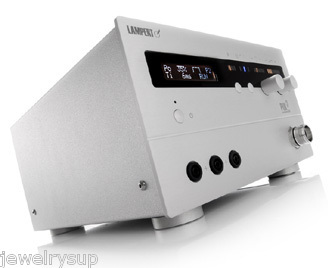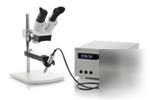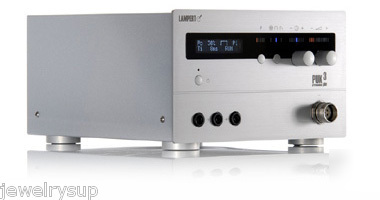Machine Recycling Discussion and Moderated Newsgroup > Parts Machines
> Gas Powered
> North
> New
> Lampert puk 3 professional plus high end fine welding
Lampert puk 3 professional plus high end fine welding
PUK 3 provides a long-awaited missing link between difficult joining techniques and laser welding devices. With the help of an intelligent combination of high performance electronics and precision mechanics, we ve been able to create a unique spot welding device. It s small size, low weight and minimum energy use are important factors leading to your advantage. Excellent ignition and welding characteristics allow a broad range of use. With our welding device, you re able to gain access to new dimensions of welding techniques in the area of production and repair.
Although all of the important innovations are already in the "PUK professional", the "PUK 3 professional plus adds still more functions and performance.
The Plus" device stands for even more applications, finer ranges of adjustment and 5 memory programmes, which the operator can use to save selected settings.
Now with intelligent energy distribution within the individual welding impulses, the finished result has been substantially improved.
This welding impulse (impulse shape) is characterised by "soft" welding behavior and is recommended for most applications.
This setting makes precise welds possible at very thin materials. This particularly fine output gradation, as well as a special pulse shape in the micro mode, is suitable particularly for material thicknesses as thin for 0,10 mm for sheet material as for 0,25 mm wires!!!
This pulse shape is recommended for applications, in which it is essential to weld in deep joints or angles.
The Gapspot (joint mode) is also very well suitable for silver. With this pulse shape even normally difficult weldable silver alloys can be welded with success.
PUK 3 professional plus extends the characteristics by using a substantially stronger power module which realises more than 30% power over PUK 3 professional.
The memory function with 5 memory programs where the operator can store his setting, makes the plus a must for the professional and ambious user.
The function, as well as the applications are very close to laser welding. The accurate positioning of small and stable spot welds and/or welding at difficult and deep lying positions can be performed easily.
In contrast to soldering the heat transfer is very low when welding with the PUK. Therefore welding in close proximity to stones and beads no longer poses a problem.
The setting of welding and pulse time allows the user to accurately regulate the spot weld diameter and the penetration depth. Welding takes place without the inhibition of a welding box, thanks to the flexible employment of the welding hand piece. Alternatively, the hand piece can be mounted in the stable desk stand or microscope mounting arm. Even finest welds performed under the welding microscope with work pieces starting from 0,1mm in thickness are now easily performed thanks to the new micro-mode function.
Using the PUK fine welding devices opens many possibilities of fine welding applications. Welding on fittings, adding material, welding a loop, joining items prior to soldering, fixing porosity, and preparation of seams are just a few of the many examples of work which is now possible.
Metal can be added easily especially where material is missing for example on fracture lines or where the profile of the work piece needs to be built up. All precious metals and precious metal alloys, high-grade steel and titanium, as well as many tin alloys (costume jewelry) are particularly suitable for welding. Principally it applies that all metals, which are suitable for arc welding can be welded with the PUK Generation 3.
CLICK LINK FOR PUK3 VIDEOS http://www.lampert.info/english/video.php
All precious metals and precious metal alloys made of gold, silver, platinum and palladium can be welded. Stainless steel, titanium, steel cobalt alloys and, with restrictions(depending on the alloys) aluminium and tin. Also brass alloys with low zinc content.
Yes with some practice it is possible. We recommend adding wire of similar material with an approximate diameter of 0,25mm to 0,4mm. For this application particularly the spot welding devices "PUK 3 professional and PUK 3 professional plus" are suitable.
Due to its additives, solder often leads to unwanted burning. As a result, you should avoid welding on soldered areas or first remove the old solder prior to welding. In certain exceptional cases, e.g. difficult repairs or generally difficult to weld alloys, it may be helpful to add a hard flowing solder (hard solder). This may bring about good results if used at the proper time and if you have enough experience.
Do all metals react the same way during welding?
No the welding result depends on the metal s melting point and heat conductivity. E.g. the higher the melting point and lower the heat conductivity, the better the result.
Can you weld directly next to a jewel stone?
Yes the heat development during welding is very low
Can you weld without protective gas?
No, welding without protective gas causes heavy oxidation and rust formation around the welding point. The welding points will become porous and lose some of their strength.
Can you use other protective gases besides Argon 4.6?
For each weld spot, approximately 0.3 to 0.4 liters of gas are used. A 10-liter bottle holds 2000 litres of gas. That is enough for 5000 to 6600 welds per bottle. These computations refer to individual weld spots.
Yes but the operator should have previous experience with the welding device. We recommended drilling pores, inserting a pin and then welding it in place.
How deep do the welding points penetrate into the material?
The penetration depth depends on the welder power setting, the pulse selection and the thermal conductivity of the material to be welded. The higher the welding output and the lower the heat conductivity, the deeper the welding point penetration. Penetration depth also depends on the angle you hold the hand piece to the work piece. Deepest penetration is at a 90 angle to the work piece. When the hand piece is held at a slant, the added wire tends to run in the direction of the applied electrode.
Yes but you must ensure that stress is limited for very small welding points. (see above) Often it is a good idea to replace the entire setting and then welding it from below.
Can you weld different metals with each other?
Yes even metals with very different metallurgical characteristics can be welded, e.g. gold and titanium. Welding is not possible if the physical differences are too great, however, e.g. titanium and steel.
Yes but the results depend greatly on the type of material. Good results can be achieved with yellow gold, white gold, palladium and platinum alloys, as well as stainless steel and titanium.
Is heat development during welding similar to laser welding?
Yes heat build-up on the work piece is just as low as during laser welding.
Can the welding points contain tungsten from the electrode points?
It is possible that tungsten particles enter the welding point. When using the device correctly, this is not very likely however.
How thin can the welded material be?
Depending upon type of device and alloy, starting from 0,1mm material thickness.
Are there any maintenance and upkeep costs?
Maintenance is not necessary. With normal operation, there are only low costs for protective gas and electrode replacement due to wear.
How many welding points can be welded with one electrode?
Over time, the electrodes become shorter due to necessary grinding of tip. As a result, lifespan is limited to 1500 to 2000 welding points per electrode.
How can it happen that the gas bottle leaks?
Since the pressure reducer is sealed with a nylon gasket, it is possible that the pressure reducer may leak after about 30 minutes when the welder is used for the first time. This problem can easily be solved by tightening the seal. Always make sure that all connections where gas could escape are tight. There is a simple trick for checking the connections. All leaks become visible when sprayed with dishwater. When the welder is not in use, the main tap on the gas bottle must always be closed tightly.
What are the reasons for weld spots not holding?
Check that the unit is functioning properly by holding the electrode to a work piece and making the electrical contact. The welder must allow gas to exit and set a weld spot. A good electrical contact to the work piece is important for the welder to function properly. Areas where the paint is too thick are not suitable. The contact should always be as close as possible to the welding area. If the work piece are only electroplated, then every point is electrically conductive and the position of the clamp is unimportant. It is important that the tip of the electrode is pointed. If the electrode is not pointed, the weld spots will not be completely welded. In order to achieve maximum penetration depth, the hand piece must be held perpendicular to the work piece. The hands must be supported firmly so that it remains completely still while welding. Hand cushions are included for this purpose. If the material thickness of the work piece is twice as great as the maximum penetration depth of the welder (0.4 mm), then the break must be specially prepared for welding. The edges are filed in a wedge shape and only the remaining material that is now touching is welded together. The ensuing joint is then filled gradually with filler material.
Why may it not be possible to weld gold fill?
Because the core material is usually copper. Copper cannot be welded due its excellent electrical conductivity.
What are the reasons when the electrode breaks or splices?
With the used electrodes it acts around a special alloy out of tungsten and metal oxides. These electrodes were conceived particularly for the employment in connection with Lampert fine welding sets. The electrodes have outstanding welding characteristics, are however hard and brittle. Due to the extreme temperature differences between the electrode tip and the electrode shank, arising when welding, large mechanical stresses occur as result in the electrode. Therefore it is not to be excluded, that isolated the electrode breaks or splices. In that case, the electrode needs to be shortened around the defective part or a new electrode needs to be used.





